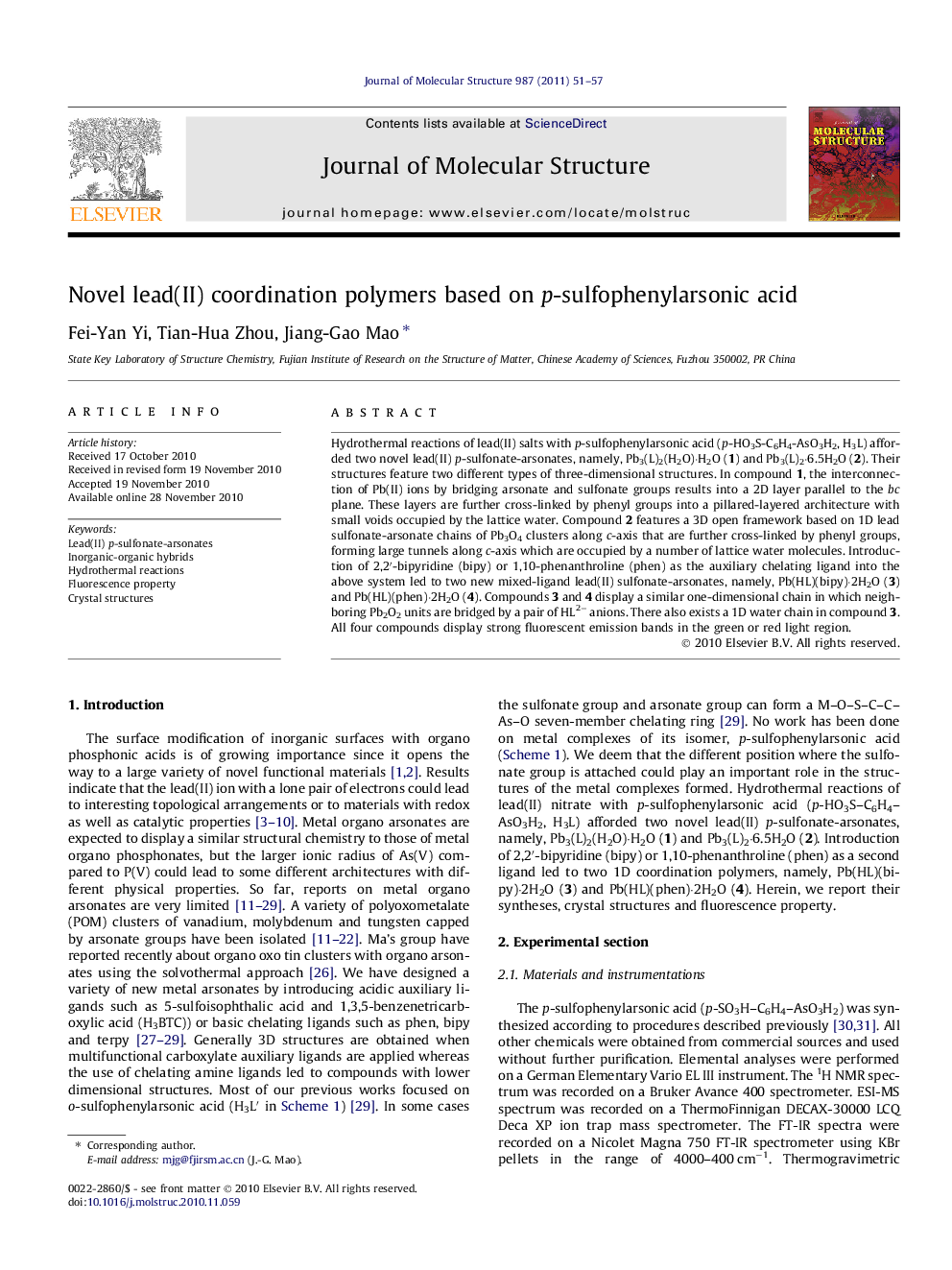| Article ID | Journal | Published Year | Pages | File Type |
|---|---|---|---|---|
| 1409622 | Journal of Molecular Structure | 2011 | 7 Pages |
Abstract
Hydrothermal reactions of lead(II) salts with p-sulfophenylarsonic acid (p-HO3S-C6H4-AsO3H2, H3L) afforded two novel lead(II) p-sulfonate-arsonates, namely, Pb3(L)2(H2O)·H2O (1) and Pb3(L)2·6.5H2O (2). Their structures feature two different types of three-dimensional structures. In compound 1, the interconnection of Pb(II) ions by bridging arsonate and sulfonate groups results into a 2D layer parallel to the bc plane. These layers are further cross-linked by phenyl groups into a pillared-layered architecture with small voids occupied by the lattice water. Compound 2 features a 3D open framework based on 1D lead sulfonate-arsonate chains of Pb3O4 clusters along c-axis that are further cross-linked by phenyl groups, forming large tunnels along c-axis which are occupied by a number of lattice water molecules. Introduction of 2,2â²-bipyridine (bipy) or 1,10-phenanthroline (phen) as the auxiliary chelating ligand into the above system led to two new mixed-ligand lead(II) sulfonate-arsonates, namely, Pb(HL)(bipy)·2H2O (3) and Pb(HL)(phen)·2H2O (4). Compounds 3 and 4 display a similar one-dimensional chain in which neighboring Pb2O2 units are bridged by a pair of HL2â anions. There also exists a 1D water chain in compound 3. All four compounds display strong fluorescent emission bands in the green or red light region.
Related Topics
Physical Sciences and Engineering
Chemistry
Organic Chemistry
Authors
Fei-Yan Yi, Tian-Hua Zhou, Jiang-Gao Mao,
